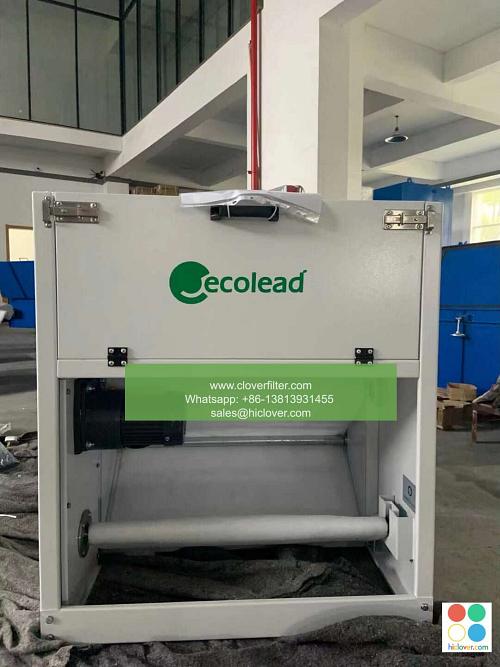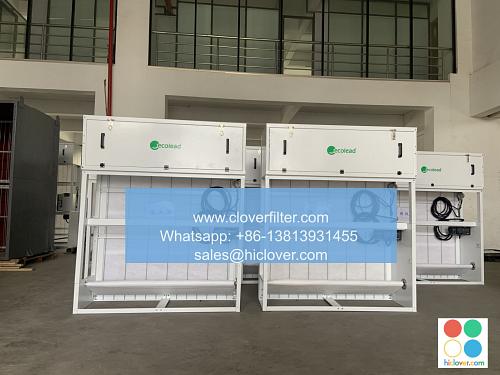Air Filter Technology: A Review of Applications in Medical Settings

Air filter technology has become a crucial component in medical settings, playing a vital role in maintaining a healthy and safe environment for patients, staff, and visitors. The application of air filter technology in medical settings is diverse, ranging from HEPA filter systems to ultra-low penetration air (ULPA) filters, and activated carbon filters. This article aims to provide a comprehensive review of the applications of air filter technology in medical settings, highlighting various areas where this technology is being utilized.
Introduction to Air Filter Technology
Air filter technology has undergone significant advancements in recent years, with a focus on developing more efficient and effective filtration systems. Nanofiber filters, electrostatic filters, and photocatalytic filters are some of the innovative technologies being used in medical settings to remove airborne contaminants, including bacteria, viruses, and other microorganisms. These advanced filtration systems are designed to provide a higher level of indoor air quality (IAQ) and reduce the risk of hospital-acquired infections (HAIs).
Applications in Medical Settings
The application of air filter technology in medical settings is vast, with various areas benefiting from this technology. Some of the key areas include:
- Operating Rooms (ORs): Air filter technology is used to maintain a sterile environment in ORs, reducing the risk of surgical site infections.
- Intensive Care Units (ICUs): Air filtration systems are used to remove airborne contaminants, including nosocomial infections, and provide a safe environment for critically ill patients.
- Isolation Rooms: Air filter technology is used to prevent the spread of infectious diseases, such as tuberculosis and influenza, in isolation rooms.
- Laboratories: Air filtration systems are used to maintain a controlled environment in laboratories, reducing the risk of contamination and exposure to hazardous chemicals.
- HEPA Filters: High-efficiency particulate air (HEPA) filters are designed to capture 99.97% of particles as small as 0.3 microns, making them effective against bacteria, viruses, and mold.
- ULPA Filters: Ultra-low penetration air (ULPA) filters are designed to capture 99.99% of particles as small as 0.12 microns, making them even more effective than HEPA filters.
- Activated Carbon Filters: Activated carbon filters are used to remove gases and odors from the air, making them effective in areas where chemical contaminants are present.
- Improved Indoor Air Quality (IAQ): Air filter technology helps to remove airborne contaminants, improving the overall IAQ in medical settings.
- Reduced Risk of Hospital-Acquired Infections (HAIs): Air filter technology helps to reduce the risk of HAIs, which are a major concern in medical settings.
- Increased Patient Safety: Air filter technology helps to provide a safe environment for patients, reducing the risk of exposure to airborne contaminants.
- High Maintenance Costs: Air filter technology requires regular maintenance, which can be costly and time-consuming.
- Filter Replacement: Air filters need to be replaced regularly, which can be a challenge in medical settings where infection control is a top priority.
- Standardization and Regulation: There is a need for standardization and regulation of air filter technology in medical settings to ensure that all filters meet the required standards.
Types of Air Filters Used in Medical Settings
Various types of air filters are used in medical settings, each with its own unique characteristics and applications. Some of the most commonly used air filters include:
Benefits and Challenges of Air Filter Technology in Medical Settings
The application of air filter technology in medical settings has numerous benefits, including:
However, there are also challenges associated with the application of air filter technology in medical settings, including:
Conclusion
Air filter technology has become a crucial component in medical settings, playing a vital role in maintaining a healthy and safe environment for patients, staff, and visitors. The application of air filter technology in medical settings is diverse, ranging from HEPA filter systems to ULPA filters and activated carbon filters. While there are challenges associated with the application of air filter technology in medical settings, the benefits far outweigh the costs. As technology continues to evolve, we can expect to see even more innovative and effective air filtration systems being developed for use in medical settings. It looks like you haven’t asked a question or provided any context. What would you like to talk about? I can offer information, answer questions, or provide opinions on a wide range of topics. Please feel free to ask me anything.


